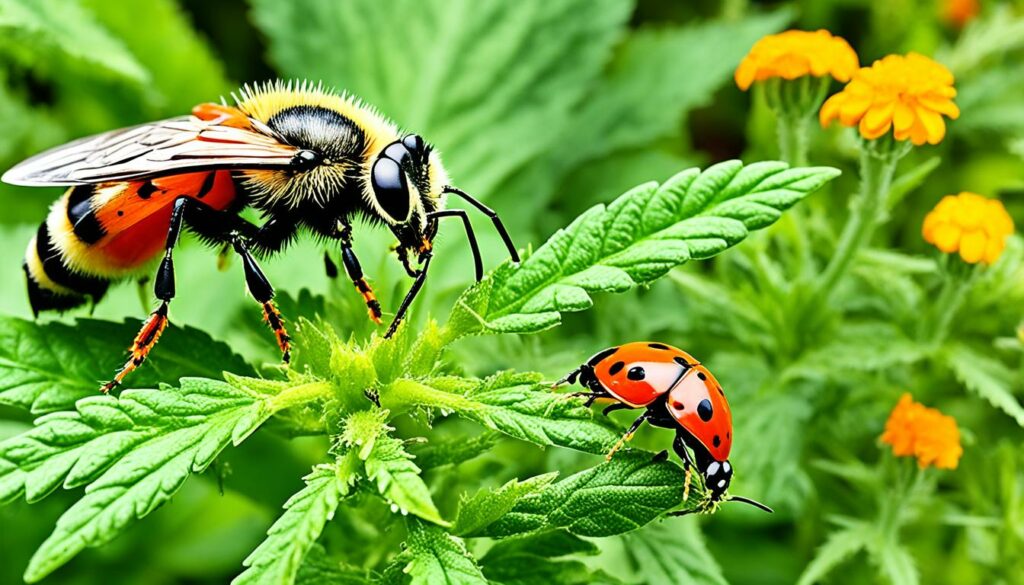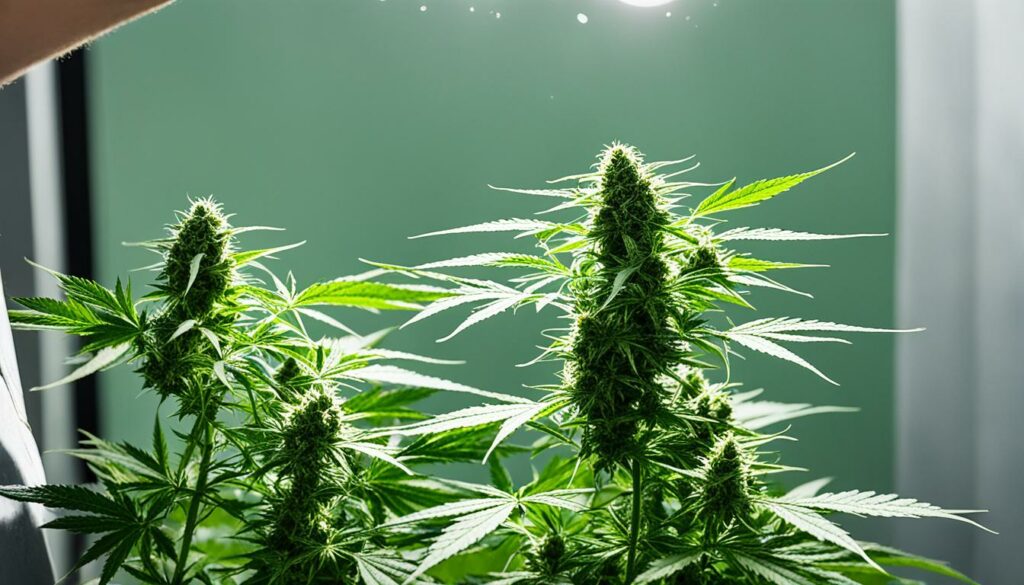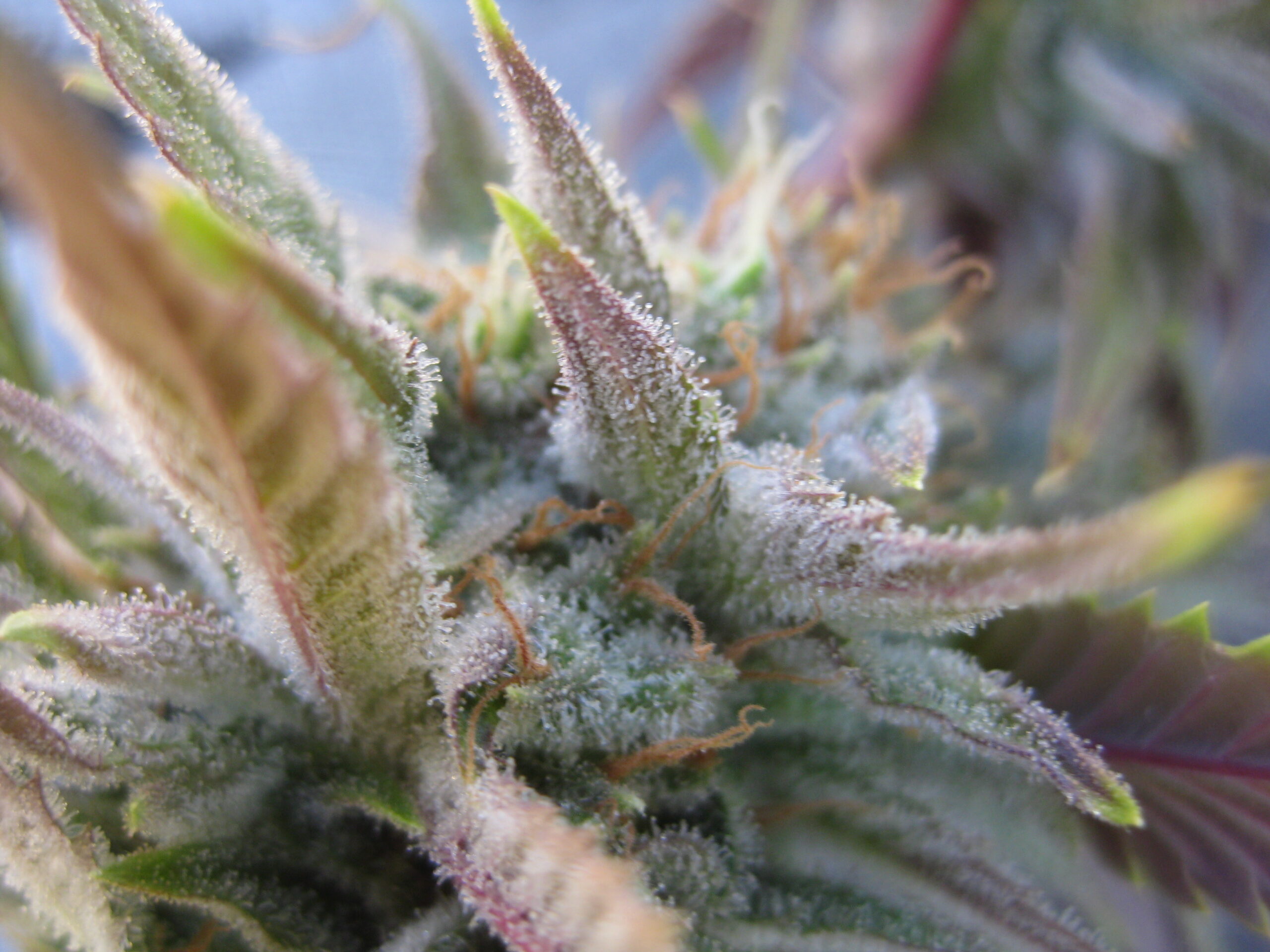Organic cannabis is becoming more popular as people look for safer, better products. High Grade Harvest uses eco-friendly methods to make top-quality cannabis. This way, they reduce harm to the environment. They avoid synthetic fertilizers and pesticides.
Growers focus on keeping soil healthy, picking the right strains, and using organic nutrients. These steps lead to better harvests and help nature. The USDA checks that organic hemp meets strict rules.
Key Takeaways
- Organic cannabis is in high demand due to safety and quality concerns
- Natural growing methods enhance plant health and environmental sustainability
- USDA certification governs organic hemp production standards
- Proper soil preparation and organic nutrients are crucial for quality cannabis
- Sustainable techniques minimize environmental impact while maximizing crop quality
Understanding Organic Cannabis Cultivation
Organic cannabis cultivation uses natural methods for growing high-quality plants. This method is good for the environment and produces great results. Let’s look at the main parts of organic growing and how it affects cannabis production.
Principles of Organic Growing
Organic growing depends on a soil food web. It doesn’t use tilling, pesticides, or chemical fertilizers to keep soil life healthy. No-till farming keeps topsoil safe, saves resources, and helps lock carbon in the soil.
Garden beds help roots grow deep, and fabric pots improve air flow for growing in containers.
Benefits of Organic Cannabis
Organic cannabis has many benefits. These plants can produce a lot and need nutrients from things like seaweed, manure, and compost. This makes the final product healthier, with better taste and strength.
Environmental Impact
Organic cannabis farming is good for the environment. It helps with biodiversity and soil health. Using techniques like drip irrigation and mulch saves water.
Natural ways to fight pests, like planting things together, work well without harmful chemicals.
| Aspect | Organic Cannabis Cultivation |
|---|---|
| Soil Health | Preserves soil life, avoids chemical inputs |
| Water Usage | Optimized through techniques like drip irrigation |
| Pest Control | Natural methods like companion planting |
| Product Quality | Enhanced flavor and potency |
By using organic growing methods, cannabis growers can make high-quality plants and reduce their environmental impact. This way, they make better products and support sustainable farming.
Selecting the Right Cannabis Strain for Organic Growth
Choosing the right cannabis strain is key to growing organic cannabis. It affects your harvest’s quality and yield. Let’s look at what to think about when picking the best strain for your garden.
Think about your local climate, space, and what you like when picking a strain. Some strains fight off pests and diseases well, perfect for organic gardens. Blue Dream, Durban Poison, and Sour Diesel are great examples of these resilient strains.
The climate is important when choosing a strain. Outdoor growers need to pick strains that fit their climate. Indica strains do well in cool weather, while Sativas prefer it warmer. Hybrids can adjust to different climates.
- Indica strains for cooler climates: Northern Lights, Granddaddy Purple
- Sativa strains for warmer regions: Green Crack, Durban Poison
- Hybrid strains for versatility: Blue Dream, Girl Scout Cookies
Here’s a table with popular organic-friendly strains and their traits:
| Strain | Type | Flowering Time | Yield (oz/plant) | THC Content (%) |
|---|---|---|---|---|
| Blue Dream | Hybrid | 9-10 weeks | Up to 21 | 17-24 |
| Northern Lights | Indica | 6-7 weeks | Up to 18 | 16-21 |
| Durban Poison | Sativa | 8-9 weeks | Up to 16 | 15-25 |
| Girl Scout Cookies | Hybrid | 9-10 weeks | Up to 19 | 18-28 |
For successful organic cannabis, pick strains that fit your environment and goals. Choosing the right strains means a better harvest. It’s all about finding the right match for your garden.
Soil Preparation and Composting for Cannabis
Starting with organic cannabis growth means getting the soil right. The right mix helps your plants thrive and get the nutrients they need.
Testing and adjusting soil pH
The ideal soil pH for cannabis is between 6 and 7. This lets plants take in nutrients well. Check your soil often and tweak it with natural fixes like lime or sulfur as needed.
Creating nutrient-rich compost
Organic compost is vital for cannabis. It enriches the soil, holds water, and gives plants the nutrients they need. Mix 25-50% green stuff (like grass clippings) with 50-75% brown stuff (like woodchips) to make compost. This mix will break down in 1-6 months, depending on how you do it.
Soil amendments for cannabis
Boost your soil with natural helpers:
- Mature manure: Gives nutrients and better soil structure
- Worm humus: Increases microbes and nutrient access
- Bat guano: Full of nitrogen and phosphorus
- High-quality peat mix: Keeps water in the soil
These additions help keep soil pH right, make it better, and cut down on synthetic fertilizers.
| Soil Type | Characteristics | Amendments Needed |
|---|---|---|
| Clay | Keeps nutrients, can get waterlogged | Sand, organic stuff |
| Sandy | Drains fast, dries out quickly | Compost, clay |
| Loam | Great for cannabis, balanced | Little to no amendments needed |
Great soil preparation is key to healthy cannabis plants. Spend time making the best soil mix, and your plants will give you lots of harvests.
Organic Nutrients and Fertilizers for Cannabis
Organic plant nutrition is crucial for growing top-quality cannabis. Natural cannabis fertilizers give plants the nutrients they need without harmful chemicals. These slow-release nutrients help plants grow strong and protect the environment.
Organic fertilizers are available in different forms. Dry powders are affordable and last a long time. Liquid fertilizers absorb quickly and are easy to apply. Both types give plants the macro and micronutrients they need to grow well.
- Worm humus: Rich in nutrients and beneficial microorganisms
- Bat guano: High in nitrogen, phosphorus, and potassium
- Bone meal: Ideal for flowering, packed with phosphorus and calcium
Liquid organic fertilizers are also popular. Top picks include Bio Grow by Biobizz, Organic Grow by B.A.C., and Alga Grow by Plagron. These products give cannabis plants the balanced nutrition they need for strong growth.
| Fertilizer Type | Benefits | Best Use |
|---|---|---|
| Worm Humus | Essential nutrients, beneficial microorganisms | All growth stages |
| Bat Guano | High NPK content | Vegetative growth |
| Bone Meal | Rich in phosphorus and calcium | Flowering phase |
| Seaweed Extract | Promotes healthy growth | All growth stages |
Many growers prefer top-dressing to apply these fertilizers. This method works well and keeps the soil healthy. Organic nutrients release slowly, giving plants steady nourishment as they grow.
Sustainable Watering Techniques for Cannabis Plants
Efficient cannabis irrigation is key to growing healthy plants while saving water. Cannabis plants are mostly water, making proper hydration vital for their health. Let’s look at ways to save water and the best ways to water your cannabis.
Water Conservation Methods
Using water-saving techniques can cut down on water use in growing cannabis. Drip irrigation is a top choice because it delivers water precisely. You can adjust it based on the weather to avoid giving too much or too little water.
- Hand watering for small-scale grows
- Drip irrigation for large-scale operations
- Flood and drain systems for optimal oxygenation
- Wick systems for passive water delivery
Optimal Watering Schedules
The Emerald Growers Association says growers use about 4.5 liters of water daily for every 500g of flower. This helps us figure out how often to water. It’s best to water cannabis every 3-6 days, depending on the pot and plant size, and the weather.
Signs of Over and Under-Watering
Knowing when you’re watering too much or too little is key to keeping your plants healthy. Both can hurt your cannabis plants.
| Overwatering Signs | Underwatering Signs |
|---|---|
| Yellowing leaves | Wilting leaves |
| Root rot | Dry, crumbly soil |
| Mold and mildew | Stunted growth |
To know when to water, check the soil’s moisture by feeling the top 5cm or weighing the pot. Water when the top layer is dry, giving 25-33% of the pot’s capacity for a good soak. Proper watering saves water and helps your plants grow well.
Natural Pest Control in Organic Cannabis Growing
Organic pest management is key for growing healthy cannabis plants without harmful chemicals. Growers often face pests like aphids, spider mites, and whiteflies. Diseases such as powdery mildew and root rot can also harm crops. Luckily, there are natural ways to fight these problems.
Beneficial insects are a big help in controlling pests. Ladybugs eat up to 50 aphids a day, and green lacewings eat various soft-bodied insects. Adding these insects to your garden creates a natural defense against pests.

Natural pesticides are another good choice for organic growers. Neem oil is great for fighting small soft-bodied insects like thrips and mealybugs. Insecticidal soaps target specific pests. For a homemade solution, you can use garlic, chili peppers, or essential oils to keep pests away.
Preventing pests is crucial in organic pest management. Healthy soil, proper watering, and crop rotation make plants stronger. Physical barriers like row covers also help protect plants. By using these methods together, growers can keep their cannabis healthy and pest-free naturally.
| Pest Control Method | Target Pests | Effectiveness |
|---|---|---|
| Ladybugs | Aphids | Up to 5,000 aphids per lifetime |
| Green Lacewings | Aphids, Leafhoppers, Spider Mites | High |
| Neem Oil | Aphids, Thrips, Spider Mites | Effective against soft-bodied insects |
| Insecticidal Soaps | Thrips, Mealybugs, Scale Insects | Targeted control |
Maximizing Sunlight and Ventilation for Healthy Plants
Growing cannabis needs focus on light and air. Let’s see how to make the best environment for your plants.
Outdoor Light Optimization
Cannabis plants adore sunlight. For outdoor growing, choose spots with full sun. Your plants need at least 6 hours of direct sunlight every day. Remember, more light means bigger yields.
Indoor Grow Light Selection
Indoor growers must mimic natural sunlight. LED grow light systems are a great choice. They use less energy and produce less heat. Plus, they let you change light spectrums for different growth stages.
During the vegetative stage, give your plants 18 hours of light daily. This helps them grow lush. When flowering starts, switch to 12 hours of light and 12 hours of dark.
Proper Air Circulation Techniques
Good air flow for plants is key. It stops humidity buildup and strengthens stems. Use fans to keep air moving in your grow space. This helps prevent mold and mildew.
- Place fans at plant level for best results
- Ensure air moves across all plants evenly
- Change air in your grow room several times per hour
By meeting cannabis light requirements and providing good air flow, you’re setting up your plants for success. Happy growing!
Temperature and Humidity Control in Organic Cultivation
Mastering climate control for cannabis is key to growing organically. Cannabis plants do best in certain temperature ranges at each growth stage. They like daytime temperatures of 70-85°F (20-30°C) and cooler nights.
During the flowering stage, keep temperatures around 65-80°F (18-26°C). This helps improve bud quality, color, and smell.
Managing humidity is also crucial for optimal growth. Seedlings and clones need 70-80% humidity. As they grow, lower the humidity levels.
For vegetative growth, aim for 40-70% humidity. In the flowering stage, keep it at 40-50%. In the last weeks, humidity should be under 40% to avoid mold and boost resin production.
It’s important to balance temperature and humidity to prevent bud rot. Use dehumidifiers and air conditioners to keep levels right. Dehumidifiers increase temperature and lower humidity, while air conditioners do both.
| Growth Stage | Temperature (°F) | Humidity (%) |
|---|---|---|
| Seedling | 70-85 | 70-80 |
| Vegetative | 70-85 | 40-70 |
| Flowering | 65-80 | 40-50 |
| Late Flowering | 65-80 | Below 40 |
By monitoring and adjusting temperature and humidity, organic cannabis growers can create the best environment. Remember, most water given to cannabis plants turns into air. This shows how important humidity control is in your grow space.
Organic Cannabis Growing Techniques
Organic cannabis cultivation uses natural methods for top-quality plants. These methods boost yield, better plant health, and make growing sustainable.
Training and Pruning Methods
Plant training is key in organic cannabis growing. Topping cuts the main stem to help grow more colas. The ScrOG method spreads branches under a screen for better light and bud density.

Companion Planting Strategies
Companion plants help cannabis grow better and keep pests away. Basil keeps insects off and makes the cannabis taste better. Marigolds draw in good bugs and keep nematodes away. These plants create a natural guard for your cannabis.
Nutrient Cycling Practices
Managing nutrients sustainably is vital in organic cannabis growing. Using compost from plant waste and adding it back to the soil makes a closed system. This method naturally enriches the soil and cuts down on outside nutrients.
| Technique | Benefits | Implementation |
|---|---|---|
| Topping | Multiple cola development | Cut main stem above 3rd-5th node |
| ScrOG | Improved light penetration | Install screen, weave branches through |
| Companion Planting | Natural pest control | Plant basil or marigolds nearby |
| Nutrient Cycling | Soil enrichment | Compost plant waste, reuse in soil |
Using these organic methods, growers get bigger, fuller buds in a healthy, sustainable way for their cannabis plants.
Harvesting Techniques for High-Quality Organic Cannabis
Learning how to harvest cannabis is key to getting top-quality buds. It’s all about knowing when to pick by watching the trichomes. This way, you get buds that are potent, flavorful, and of the highest quality.
Trichome monitoring means looking at the tiny crystals on the buds. Use a magnifying glass or jeweler’s loupe to see them up close. When these trichomes change from clear to cloudy or amber, it’s time to harvest.
When you harvest, be gentle to keep the trichomes and buds safe. This keeps your organic cannabis at its best. Remember, timing is crucial in growing cannabis.
| Trichome Color | Effect | Harvest Timing |
|---|---|---|
| Clear | Underdeveloped, low potency | Too early |
| Milky white | Peak THC levels, energetic high | Ideal for most strains |
| Amber | More relaxing, sedative effects | Later harvest for indica-dominant strains |
Pre-harvest flushing, done two weeks before harvest, boosts bud quality and smoothness. This means watering the plants with pure water to clean out extra nutrients. For plants grown in soil, keep the pH between 6.0 and 6.8 during this process.
By using these harvesting tips, you’ll make sure your organic cannabis is the best it can be. This leads to a top-quality product for your customers.
Proper Drying and Curing Methods for Organic Cannabis
After harvesting your organic cannabis, drying and curing are the next steps. These steps keep the flavor, aroma, and potency. Let’s look at the best ways to dry and cure cannabis for top-quality buds.
Optimal Drying Conditions
Begin by hanging the trimmed buds in a dark, well-ventilated area. The best drying spot is 60-70°F with 50-60% humidity. This slow drying takes 7-10 days. Buds are done when small stems snap, not bend.
Curing Process and Timeline
After drying, move buds to airtight containers. The curing starts right after harvest and goes on in jars at 70°F with 55-62% humidity. Open the containers daily for the first two weeks to let out extra moisture. This “burping” helps cure evenly and stops mold.
Storage Best Practices
For keeping buds fresh for a long time, store them in opaque, airtight containers away from light, heat, and moisture. When dried and cured right, cannabis can last up to two years if stored well. Think about using special containers with humidity packs for the best care of your organic cannabis.
| Stage | Temperature | Humidity | Duration |
|---|---|---|---|
| Drying | 60-70°F | 50-60% | 7-10 days |
| Curing | 70°F | 55-62% | 2+ weeks |
| Storage | Cool | Low | Up to 2 years |
By using these drying and curing steps, you’ll improve the quality of your organic cannabis. You’ll get smooth, potent buds with great flavor and aroma.
Conclusion
Organic cannabis cultivation is changing the game in the industry. The global market is expected to hit $9.86 billion by 2027. This shows that sustainable farming is the way forward. These methods produce high-quality cannabis and bring many benefits.
Research finds that organic cannabis has more terpenes and cannabinoids. This quality, along with eco-friendly farming, makes consumers choose it more. Organic farming helps soil, saves water, and cuts down on harmful chemicals. It’s good for farmers and the planet.
Choosing the right organic seeds and using custom soil blends and natural pest control are key. Adding beneficial microbes, organic nutrients, and proper harvesting helps plants grow well. As the industry grows, organic certification becomes more important. It sets the bar for quality and caring for the environment in cannabis production.
FAQ
What are the principles of organic cannabis cultivation?
What are the benefits of growing cannabis organically?
How do I select the right cannabis strain for organic growing?
How can I prepare soil for organic cannabis cultivation?
What organic nutrients and fertilizers can I use for cannabis?
How can I water my cannabis plants sustainably?
How can I control pests naturally in my organic cannabis garden?
How can I optimize sunlight and ventilation for my cannabis plants?
How do I maintain optimal temperature and humidity for organic cannabis cultivation?
What organic growing techniques can I implement for cannabis?
How do I know when to harvest my organic cannabis?
How should I dry and cure my organic cannabis after harvest?
How should I store my organic cannabis for long-term preservation?
Source Links
- https://earthynow.com/how-is-organic-cannabis-harvested/
- https://drearth.com/wp-content/uploads/Feeding-Schedule.pdf
- https://cannoptikum.com/en/blog/factors-in-cannabis-cultivation/the-power-of-organic-cannabis-seed-cultivation
- https://www.royalqueenseeds.com/us/blog-organic-marijuana-how-and-why-to-cultivate-it-n679
- https://floraflex.com/default/blog/post/organic-cannabis-growing-tips-for-sustainable-cultivation
- https://www.vice.com/en/article/43pymw/the-best-way-to-grow-weed-according-to-home-growers
- https://www.santacruzsentinel.com/2023/11/16/how-to-grow-weed/
- https://seedsherenow.com/outdoor-cannabis-strains/
- https://2fast4buds.com/news/how-to-compost-and-make-super-soil-for-cannabis-plants
- https://www.growbarato.net/blog/en/soil-preparation-for-growing-cannabis/
- https://2fast4buds.com/news/organic-cannabis-nutrients-composting
- https://mygoodgreen.com/blogs/the-dirt/bokashi-organic-cannabis-fertilizer
- https://pevgrow.com/blog/en/organic-fertilizers/
- https://homesteadandchill.com/how-to-feed-cannabis-organically/
- https://www.royalqueenseeds.com/us/blog-how-to-water-cannabis-plants-a-comprehensive-guide-n1205
- https://2fast4buds.com/news/how-often-should-i-water-my-cannabis-plants
- https://www.alchimiaweb.com/blogen/water-marijuana-plants-soil/
- https://seedsherenow.com/organic-pest-and-disease-prevention-for-marijuana/
- https://homesteadandchill.com/organic-cannabis-pest-control-bugs-off-nugs/
- https://grow-it-led.com/6-keys-to-maximizing-cannabis-yields/
- https://seedsherenow.com/how-to-grow-cannabis-at-home/
- https://homegrownoutlet.com/cannabis-seeds/
- https://www.growweedeasy.com/temperature
- https://www.anden.com/the-key-element-most-grow-rooms-neglect-3-reasons-to-stop/
- https://floraflex.com/CAD/blog/post/mastering-the-art-of-organic-cannabis-cultivation-tips-for-a-sustainable-and-high-quality-harvest
- https://www.zamnesia.com/us/blog-growing-organic-cannabis-n106
- https://www.marijuana-seeds.nl/blog/growing-organic-marijuana
- https://www.leafly.com/news/growing/growing-organic-cannabis
- https://www.dripworks.com/blog/flushing-cannabis-plants-everything-you-need-to-know
- https://www.ncbi.nlm.nih.gov/pmc/articles/PMC8290527/
- https://www.prospiant.com/advanced-cannabis-growing-techniques/
- https://homesteadandchill.com/how-to-harvest-cure-store-cannabis/
- https://www.growweedeasy.com/drying-curing
- https://www.advancednutrients.com/articles/drying-curing-buds/
- https://connectedcannabisco.com/blogs/news/mastering-organic-cannabis-cultivation-tips-guide
- https://supersativaseedclub.com/blog/p-8-top-tips-for-growing-organic-cannabis
- https://seedsherenow.com/benefits-of-organic-cannabis-farming/

